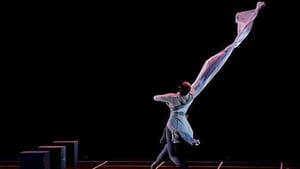Stay in the Loop
BSR publishes on a weekly schedule, with an email newsletter every Wednesday and Thursday morning. There’s no paywall, and subscribing is always free.
Seeking sanctuary
Kun-Yang Lin/Dancers present 'Sanctuary'

There’s been quite a bit of talk lately about the intersection of art and politics. How can we engage with and critique the political sphere with art, and how we can do such art justice through our interpretations? In this spirit, the two compelling pieces in Kun-Yang Lin/Dancers’ current appearance, Sanctuary, challenge us with their message and compel us to give them a voice.
Politics as a dangerous game
In his introductory remarks, Ken Metzner, Kun-Yang Lin/Dancers’ executive director, described the influences on Lin’s One: Immortal Game. In 2012, Lin became a citizen in time to vote in the presidential election. He soon realized how adversarial the political landscape was. From that experience he determined to create a piece that explored the competitive nature of politics as a game of chess that, like war, both reveals and obscures our common humanity.
The curtain opened to three black boxes on an empty stage. Two dancers (Shaness Kemp and Liu Mo) in soft grey tunics and leggings entered from opposite sides and sat on opposing boxes, the box between them acting as the table across which they battled with sharp, aggressive hand and arm gestures. To the driving beat of original music by Cory Neale, the company, in the same Heidi Barr costumes, entered and the game moved from the table to the dancers’ bodies.
I loved the forceful style of this dance, which combined Chinese and Western technique. The dancers’ extensions were an in-your-face challenge, with legs like battle swords, flexible but steely. Even the frozen poses hummed with contained power.
In a shadow-duet titled “Yin and Yang,” Nikolai McKenzie appeared alone, compact and intense, in a dance that was half martial arts and all force and angled movements. Then, haunting the back of the stage, Liu Mo, in a floating “water sleeve” that was yards long, presented the softer yin side in movements that seemed to flow effortlessly with a contained strength. The dancers met in shadowing movements that captured the sense of battle between two sides of the universe. Against expectations, the pair opened our perspective to the eternal nature of the conflict, while the full company narrowed the focus to the game.
The Politics of Tragedy
Metzner returned after intermission to introduce the world premiere of Lin’s Santuario. He explained that the title means “sanctuary” in Spanish. The piece was Lin’s response to the Pulse nightclub shooting in Orlando, Florida, in June 2016, which targeted young LBGT people of color, and to the growing culture of hatred and violence in the wake of the recent election.

The piece took place in a club setting, with dancers in black pants and shirtless or in tanks moving freely to a mix of club music and flirting in various carefree combinations. Then the mood turned ominous, fearful. The music shifted as well, to Arvo Pärt’s “Kyrie” and more of Cory Neale’s soundscape, while dancers mimicked shooting guns. The piece ended with a striking image: dancers folded in on one another in a resonant composition that brought to mind Michelangelo’s Pietà and the iconic 1970 photo of student protestors shot at Kent State University, while excerpts from Jameson Fitzpatrick’s “Poem for Pulse” played over the sound system.
"Santuario" had some beautiful passages, including that joyous opening. A duet with two men was powerful and sexy, and the very pregnant Jessica Warchal-King brought to the piece a reminder that, ultimately, life wins. The masterful lighting by Stephen Petrilli was sometimes diffused, sometimes concentrated in a claustrophobic cone of light, and sometimes both at once, heightening the effect of the dance. And the ending was shattering.
I think, with time and distance, Lin may tweak a few things. In particular, the duets for the women were not quite as strong as the one for the men. As an immediate and visceral artistic response to the tragedy, however, "Santuario" certainly succeeds.
What, When, Where
Sanctuary/. Choreography by Kun-Yang Lin. Kun-Yang Lin/Dancers. Through May 9, 2017, at the Prince Theater, 1412 Chestnut Street, Philadelphia. (215) 422-4580 or kyld.org.
Sign up for our newsletter
All of the week's new articles, all in one place. Sign up for the free weekly BSR newsletters, and don't miss a conversation.
 Camille Bacon-Smith
Camille Bacon-Smith